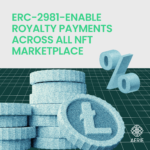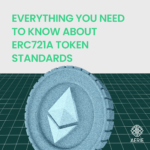NFTs to Preserve Street Art
Last June, 6 artists—Jet Martinez, Wolfe Pack, Vogue, Joshua Mays, Bud Snow, and Ruff Draft—let themselves into the 5th flooring of Oakland’s most renowned structure: the Tribune Tower. Once within, they painted and setup murals over 10,000 square feet of empty walls. The pieces varied in design and subject from Wolfe Pack’s metaphorical piece commemorating dancer IceCold3000 to Jet Martinez’s pastel-colored modern work influenced by Mexican folk art. Within a couple of months, those murals were gone—erased by their developers’ own hands. The works were never ever suggested to live in that structure. They were indicated for the metaverse.
It isn’t unusual for street art to have a brief life expectancy, however this was various. Destruction was constantly part of the Murals to the Metaverse strategy, one that turned the ephemerality of street art into a function rather than a bug. In the days in between the production and obliteration of their works, the artists did something uncommon: Every mural was scanned and turned into a 3D design of itself. Each was then improved utilizing enhanced truth. For almost 2 weeks, the group led AR trips of the area, letting some 300 individuals share in the immersive experience. Once they were ruined, the murals were minted on the blockchain as NFTs and now live on digitally. “Buildings can fall apart, weather condition can cause damage, and advancements can hamper views,” describes artist Rachel Wolfe-Goldsmith, aka Wolfe Pack, who led the task. “By scanning a mural and turning it into an NFT, we permanently celebrate the art.”
This is a far cry from the image numerous individuals have of street artists—of only figures, spray cans up, furtively painting in the dead of night just to have cleansing teams whitewash their piece the next early morning. Far from being vandals, the brand-new generation of street artists frequently works on city-sanctioned jobs, putting murals that commemorate neighborhood and history on popular structures. Different from graffiti artists tossing up tags, they’re making marks of another kind, and, more and more typically, they integrate innovation that boosts and extends the experience beyond the wall.
Independent manager Gita Joshi, host of The Curator’s Salon podcast, isn’t shocked at this fast welcome of innovation. “Street artists are typically defiant in nature,” she states, “so it makes sense that they would be at the leading edge of advancements in the digital area where they can have their work seen by individuals beyond the area of the street art.”
Even prior to innovation ended up being an intrinsic part of the art itself, it was a tool that artists depended on, from software application to imagine and edit their works to projectors utilized to place it up on walls. Tech has likewise penetrated street art’s visuals. “Tech has actually affected muralists’ procedures from creativity to execution,” Wolfe-Goldsmith states. “We see style aspects like problems, pixelations, contorting, chromatic aberration, and digital collage in today’s art. Street art is engaging since it’s for everybody, without barriers. It is the voice of the city, expressing political discontent, pleasure, cultural motions, and innovative patterns.”
And yet, getting an earnings from it has stayed a difficulty. NFTs may be altering that. “NFTs permit artists to grow an worldwide audience, be compensated, and discover advocacy for their work,” states Joshi, bullish for what the near future may hold. “As individuals buy genuine estate in, state, Decentraland, I anticipate NFT street artists to discover brand-new chances as commissioned artists.”
Perhaps the finest signifier of the prospective of this market is the development of business like Streeth, which is focused specifically on minting street art NFTs. “Street art is maybe the most underestimated and underserved specific niche in the art sector,” states cofounder and CEO Marco Calamassi, “but at the exact same time is the most innovative, most disruptive one, where the artist has the most liberty of speech, the most liberty of message.” Streeth isn’t alone. NFT Mural Collective was produced by street artists to assistance the category in the NFT market. ”Street art should have a location within art history simply as much as Cubism, Dadaism, or Surrealism does,” states artist and creator Stacey Coon, aka StaySea, who began the group following the tagging and defacement of 2 of her murals. “NFT agreements and platforms offer us a method to be those historians.”
Minting an NFT can be a remarkably basic procedure. In its most fundamental kind, all it needs is that you have a crypto wallet and a digital variation of your artwork. Most websites will walk you through the rest of the procedure, as NFT Mural Collective does, needing you to fill out a kind with a couple of information about the piece. You have more control and openness in the sale of the piece than in numerous standard settings, from picking the preliminary rate for the piece to choosing on the portion of secondary sale royalties you will get if the piece is resold, as well as picking from an range of payment approaches. Then, the platform takes over and mints the piece for you.
For all the ease, success, and permanence the blockchain can provide, the physical existence of a mural is still irreplaceable. Like, for example, The Majestic, a 15,000-square-foot mural painted last summertime in downtown Tulsa by artists Ryan Sarfati and Eric Skotnes, aka Yanoe X Zoueh. Rich with images that shows the art deco heritage of the city and the plants and animals of Oklahoma, it includes a main angel and 2 kids in a rich Henri Rousseau–like setting including woodpeckers, swallowtail butterflies, and catfish. So much of the power of this mural is its importance to the location and neighborhood in which it stands. But that power doesn’t stop at the ends of the wall, it’s likewise in a QR code on the mural, which opens an enhanced variation of the piece with swimming fish, flitting butterflies, and clouds racing throughout the sky. Those who can’t check out the piece in Tulsa can view an enhanced truth variation of the mural online.
“Five years ago, to believe of a 15,000-square-foot increased truth mural was simply unheard of,” states Sarfati. “I would like to produce more physical art than digital at the minute, however combining the 2 is terrific.”
But murals on the scale of The Majestic requirement huge budget plans. Sarfati and Skotnes have actually been able to produce extra earnings through NFTs of the work that the duo launched at Art Basel Miami in December, however services like NFT Mural Collective likewise let artists crowdfund based on propositions for works that will be minted when they’re total. To blur the lines in between the genuine and digital worlds and motivate online fans to engage with the physical murals, each wall will come with a Proof of Attendance Protocol, or POAP, a digital keepsake anybody can gather at each distinct mural website they goto. “NFTs expand an artist’s audience since they’re not just targeting street art fans, they’re targeting NFT fans, digital art fans, and crypto fans,” states Calamassi. “It’s a enormous audience that is getting larger and larger every day.”
That the patronage of online collectors might fund the production of murals in the genuine world may be the finest usage of NFTs . “Nothing can ever modification the deep psychological reaction of seeing a massive mural in individual,” states Coon. “Immortalizing murals on the blockchain enables these stunning and enormous pieces of art to live on well after their expiration date.”









